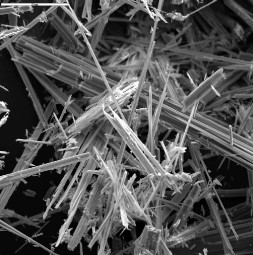Slips, trips, and falls are some of the most common hazards in the construction industry, often leading to serious injuries or even fatalities. Despite their frequency, these incidents are largely preventable with proper awareness, training, and site management.
Understanding the Hazards: Causes of Slips, Trips, and Falls
Slips, trips, and falls occur when there is a loss of balance, often due to environmental factors, poor housekeeping, or unsafe practices. Here’s a breakdown of the primary causes:
Slips: Slips happen when there is not enough friction or traction between a worker’s footwear and the walking surface. Common causes include:
- Wet or oily surfaces from spills, rain, or machinery leaks.
- Loose or unanchored flooring, such as rugs or mats.
- Mud, debris, or construction materials left on pathways.
- Ice, snow, or condensation in outdoor or unheated areas.
Trips: Trips occur when a worker’s foot strikes an object, causing them to lose balance. Key causes include:
- Cluttered walkways with tools, cables, or debris.
- Uneven walking surfaces, such as loose gravel, holes, or protruding nails.
- Poorly lit areas where obstacles are not visible.
- Unmarked elevation changes, such as steps or ramps.
Falls: Falls can happen from any height, from ground level to several stories up, and are often the most dangerous. They are typically caused by:
- Working at heights without proper fall protection (e.g., scaffolds, ladders).
- Improper use or failure of safety equipment, such as harnesses or guardrails.
- Unsecured edges, openings, or skylights.
- Lack of training on safe work practices at height.
The Impact of Slips, Trips, and Falls in Construction
The consequences of slips, trips, and falls can be severe, not only affecting the physical health of workers but also having broader implications for the construction site:
- Injuries: Common injuries include sprains, fractures, head injuries, and in severe cases, paralysis or death. These injuries often require medical attention, time off work, and long-term rehabilitation.
- Financial Costs: Costs associated with slips, trips, and falls include medical expenses, lost wages, increased insurance premiums, and potential legal fees. For employers, these incidents can also lead to project delays and loss of productivity.
- Emotional Impact: Beyond physical injuries, these accidents can cause significant emotional distress for the injured worker and their families, as well as reduce morale among coworkers who witness or are involved in the incident.
Preventing Slips, Trips, and Falls: Best Practices for Construction Sites
To mitigate the risks associated with slips, trips, and falls, construction sites must prioritize safety through proactive measures. Here are some best practices:
- Maintain Good Housekeeping: Keep work areas clean and organized. Regularly remove debris, tools, and unused materials from walkways. Ensure spills are promptly cleaned, and place warning signs in wet or slippery areas.
- Improve Lighting: Ensure adequate lighting in all work areas, especially in stairwells, corridors, and around obstacles. Proper lighting helps workers see potential hazards and navigate the site safely.
- Secure Walkways and Work Surfaces: Make sure all walking surfaces are stable, level, and free of tripping hazards. Use non-slip coatings or mats in areas prone to wet conditions, and secure cables or hoses away from high-traffic zones.
- Use Proper Footwear: Workers should wear sturdy, non-slip footwear designed for the construction environment. Proper footwear can significantly reduce the likelihood of slipping on wet or uneven surfaces.
- Implement Fall Protection Systems: When working at heights, ensure all workers have access to fall protection systems such as guardrails, safety nets, and personal fall arrest systems. Regularly inspect and maintain this equipment to ensure it functions properly.
- Training and Awareness: Educate workers on the specific slip, trip, and fall hazards present on your site. Conduct regular safety meetings to reinforce safe work practices, proper equipment use, and the importance of hazard recognition.
- Mark and Guard Hazardous Areas: Clearly mark hazardous areas, such as holes, open edges, or uneven surfaces, with signage, barriers, or warning tape. Guardrails and covers should be installed to protect workers from falls.
- Regular Safety Inspections: Conduct frequent site inspections to identify potential slip, trip, and fall hazards. Address any issues immediately and involve workers in the process to promote a culture of safety awareness.
By implementing these preventive measures, fostering a proactive approach to hazard identification, and providing ongoing training, construction sites can significantly reduce the risks associated with these common but dangerous accidents.
If you, or anyone you know needs training, please refer to our training page at phoenixoshatraining.com/services/ .
Published by OSHA Phoenix on September 12, 2024


